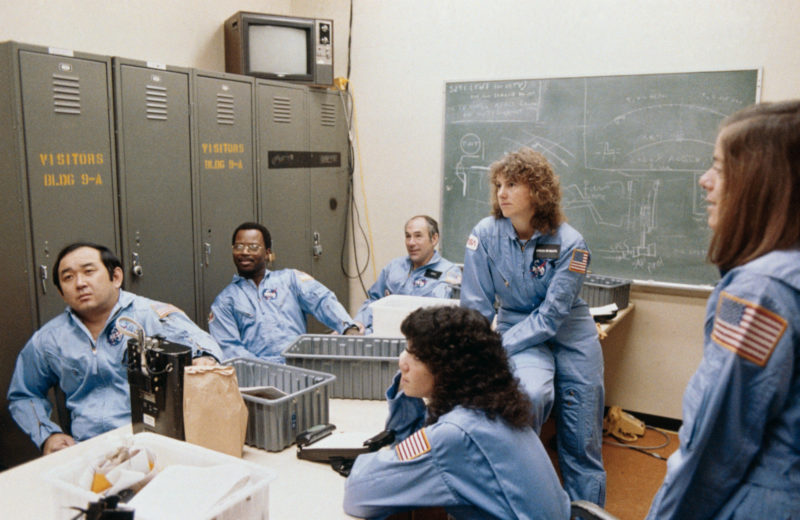
Thirty-five years passed yesterday since one of the worst and most public disasters ever witnessed in the U.S. human space program. The loss of Challenger on 28 January 1986 brought the shuttle—and the whole nation—to its knees, as several months of investigation, introspection, criticism, anger and slow, painful rebuilding commenced. Today, of course, the world is familiar with the technical and human causes of the destruction of STS-51L, but it is important to reflect on a lost flight which NASA officially baselined as being “moderately complex”, but which would have showcased many of the shuttle’s myriad capabilities and promised enormous scientific and technological yields.
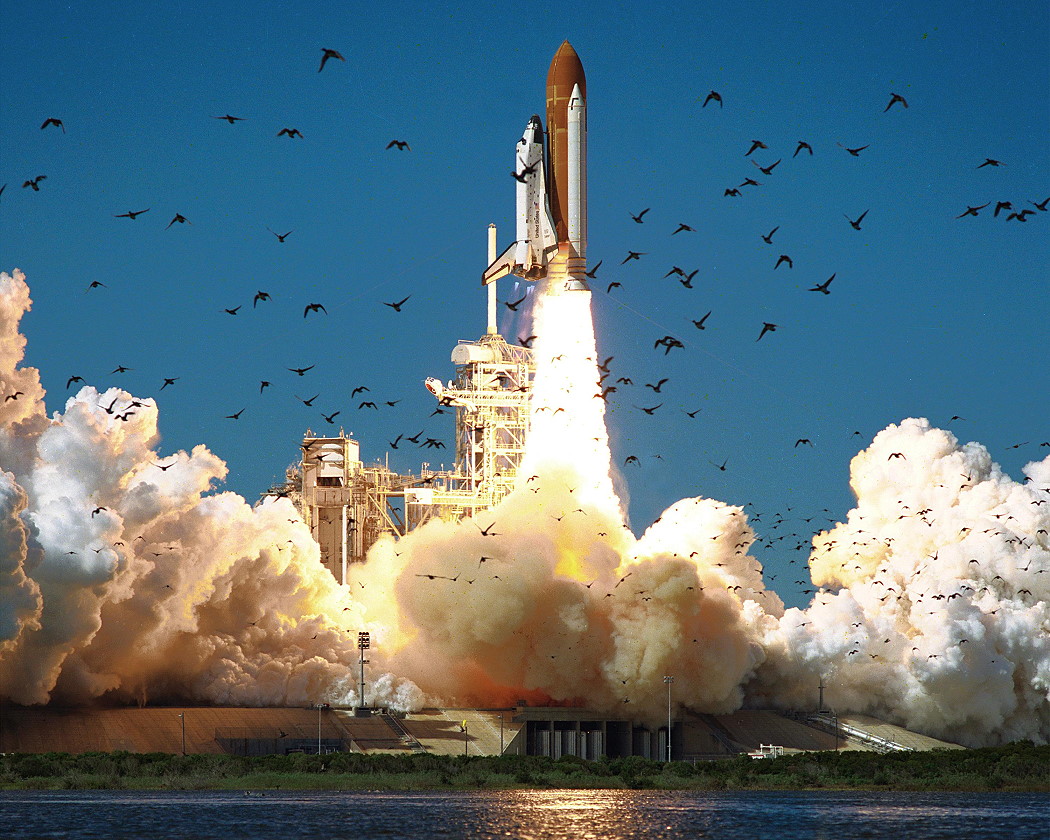
The launch of Challenger was intrinsically tied to the 75-yearly visitation of Halley’s Comet, which in the winter of 1985/86 was making its closest approach to Earth since 1910. Two weeks earlier, the crew of Columbia on STS-61C had been unsuccessful in observing the celestial wanderer, using a camera known as the Comet Halley Active Monitoring Program (CHAMP). The device failed due to a battery problem and not a single image of the comet was acquired, but it was already manifested aboard STS-51L and an expansive payload of ultraviolet telescopes (ASTRO-1) was scheduled for launch aboard STS-61E on 6 March to conduct further observations.
CHAMP would have been the primary responsibility for STS-51L Mission Specialist Ellison Onizuka, who would have buried himself under a black shroud on Challenger’s aft flight deck, early on 29 January 1986, to ensure maximum darkness for his observations.
“I will have about two minutes on four different orbits to photograph Halley’s Comet in both the visible and ultraviolet spectrum,” he told an interviewer. “The objective is to try to get this data as the comet approaches perihelion, which is just as it goes around behind the Sun and starts to head back out. It’s a regime where we do not have any data at the present time, so I’ve been told we’ll probably be the only human beings to see it at that time.”
With the destruction of Challenger and the suspension of the shuttle program, NASA lost its chance to capitalize on viewing the comet from space. As well as carrying CHAMP, Mission 51L also flew a small satellite, known as the “Shuttle-Pointed Autonomous Research Tool for Astronomy,” which NASA’s finest acronym-makers had somehow carved into the name “SPARTAN.” Designated “SPARTAN-203”, it would have been deployed on the second day of Challenger’s mission and retrieved two days later. During its 48 hours in free flight, SPARTAN-203 would have performed extensive observations of the tail and gaseous “coma” of the fabled comet.
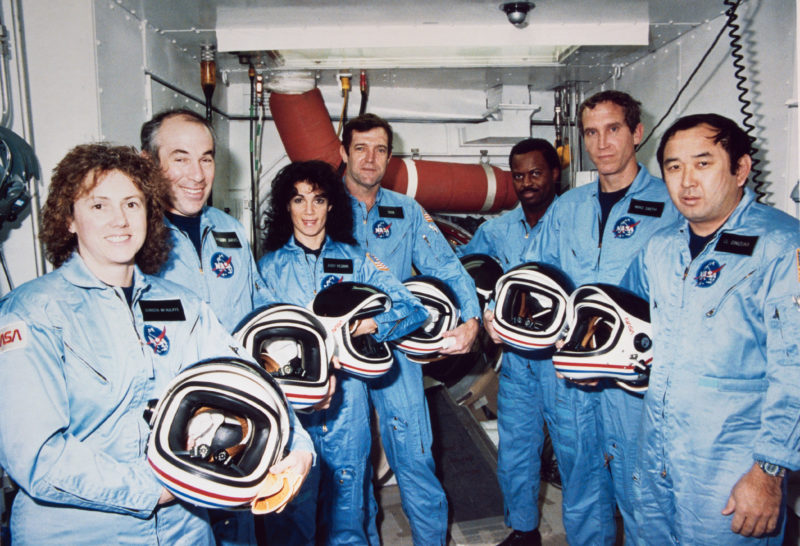
As Onizuka worked, his crewmates—Commander Dick Scobee, Pilot Mike Smith, Mission Specialists Judy Resnik and Ron McNair, Payload Specialist Greg Jarvis and civilian schoolteacher Christa McAuliffe—would have been involved in preparing SPARTAN-203 for deployment on 30 January to commence its own series of Halley observations. Built by the agency’s Goddard Space Flight Center (GSFC), of Greenbelt, Md., the small, boxy satellite would have utilized a pair of ultraviolet spectrometers and two modified Nikon F-3 cameras to study the composition of the comet’s dirty-snowball-like nucleus and 620,000-mile (1,000,000 km) shimmering tail.
McNair and Resnik were responsible for deploying and later retrieving SPARTAN-203 with the Canadian-built Remote Manipulator System (RMS) mechanical arm. Interestingly, the spectrometers, produced jointly by GSFC and the University of Colorado’s Laboratory for Atmospheric and Space Physics, were derived from backups for an instrument aboard the Mariner-9 spacecraft which had begun investigating Mars’ atmosphere in 1971.
“Comets happen to be one of the remnants of the creation of the [Solar System],” McNair said before the mission, “and they’re just a big mass of ice—of frozen gases—and the last time [Halley] came around, we weren’t sophisticated enough to do the type of things that we’re doing now. Scientists will be able to analyze the gases [and] emissions by looking at the Sun’s reflection and the absorption of sunlight and give some credibility to some of the theories—or possibly tear them down—about the origin of the Universe. Who knows what we’re going to find out of this? These types of observations can change the way you think.”
Several other space missions besides SPARTAN-203 were also watching Halley at the time: Europe’s Giotto, the Soviet Union’s twin Vega spacecraft and Japan’s Suisei and Sakigake probes were heading for the comet, but NASA believed its shuttle-borne studies had the “edge” by conducting observations as it neared “perihelion”, its closest point to the Sun. The agency hoped that from 20 January until 22 February, Halley—then some 140 million miles (225 million km) from Earth and only 60 million miles (97 million km) from the Sun—would be chemically at its most active and yield the most desirable scientific data. Actual perihelion was expected on 9 February.
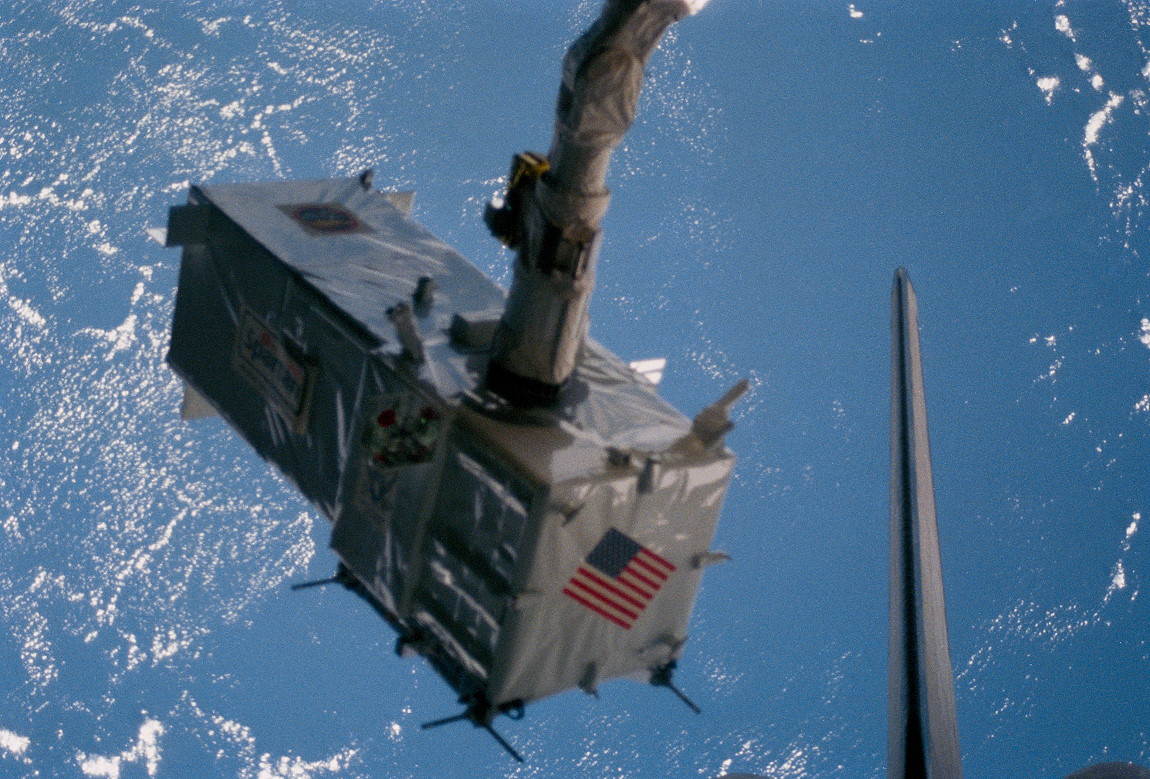
The assignment of SPARTAN-203 had already resulted in some changes to STS-51L’s launch “window”. Originally targeted for a morning liftoff, it was moved to the afternoon in order to provide the best lighting conditions for the satellite’s observations. However, an afternoon start would delete the option of touching down in Casablanca in the event that a Transoceanic Abort Landing (TAL) became necessary. Ultimately, as Challenger’s launch was pushed into the final week of January 1986, conditions for optimum viewing of Halley, based on an afternoon window, could no longer be met and the liftoff time was shifted back to the morning hours. In a sense, therefore, the delay to STS-51L’s launch from 24 January until the end of the month seemed to carry some benefit.
“The shuttle will go into an orbit 176 miles (283 km) high and inclined 28.5 degrees to the equator,” noted NASA’s STS-51L press kit. “This will have Halley visible for more than 3,000 seconds per orbit (about 56 percent of the orbit), including more than 90 seconds with the Sun occulted by the Earth.” Deployment of SPARTAN-203 would have gotten underway early on 29 January 1986, with software uploaded from the Johnson Space Center (JSC) in Houston, Texas, and voltage and current checks conducted.
At the end of the RMS arm, it would then have been “hung” over Challenger’s payload bay wall and released into space. The satellite would executed a slow, 90-second pirouette to prove that it was working properly, after which Scobee and Smith would have withdrawn to about 90 miles (145 km). This would have ensured that sunlight reflected by Challenger’s pristine white surfaces did not “confuse” SPARTAN-203’s sensors.
Following two orbits of further tests, the aperture doors covering the satellite’s two ultraviolet spectrometers would have automatically retracted to initiate an aggressive, 40-hour-long phase of free flight, of which more than half (about 20 orbits) would have been dedicated to studies of the photodissociation of water in Halley and analysis of its various nitrogen-, carbon-, and sulfur-containing molecules. Meanwhile, its cameras would have offered an ongoing record of the “large-scale” activity of the comet itself, including outbursts in its nucleus and asymmetries in its coma.
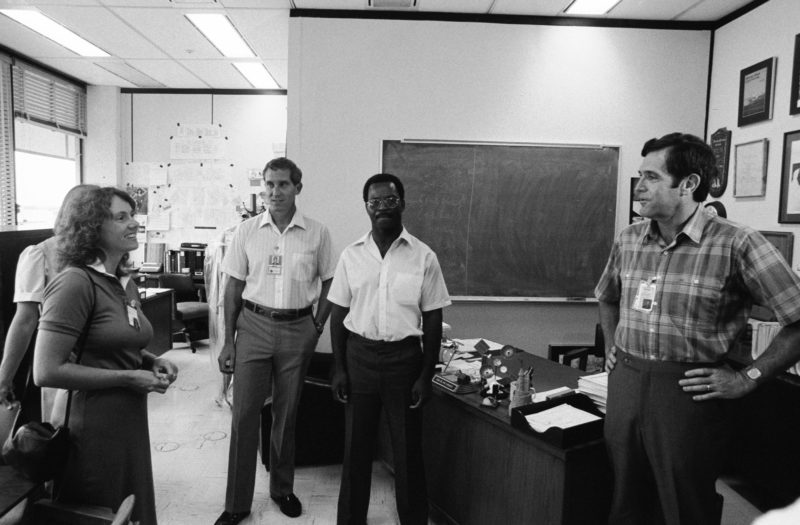
“A typical science orbit will start with four, 100-second calibration scans of Earth’s atmosphere,” NASA explained, “followed by a 900-second tail scan. Observing will be interrupted for 15 minutes of pointing updates and housekeeping. It then resumes with four, 200-second scans of the coma, followed by sunset and four coma scans while the Sun is occulted.” Rendezvous and an RMS retrieval would have followed on 31 January 1986, and SPARTAN-203 would have been positioned onto its Mission-Peculiar Equipment Support Structure (MPESS) in the forward area of the payload bay.
“The most important objective of the SPARTAN-Halley mission,” NASA’s press kit continued, “is to obtain ultraviolet spectra of Comet Halley when it is less than 67 million miles (108 million km) from the Sun. As Halley nears the Sun, temperatures rise, releasing ices and clathrates, compounds trapped in ice crystals. The highest science priority for Spartan is to determine the rate at which water is dissociated by sunlight.
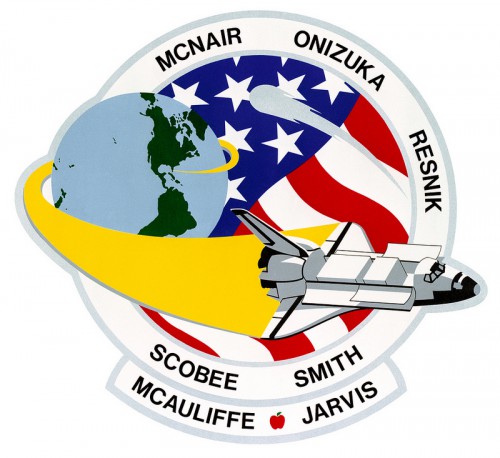
“This must be measured indirectly from the spectra of hydroxyl radicals (OH) and atomic oxygen which are the primary and secondary products. The hydroxyl coma of the comet will be more compact than the atomic oxygen coma because of its short life when exposed to sunlight. Hydrogen…will not be detectable because of the Lyman-alpha filters in the spectrometers. Heavier compounds will be sought by measuring spectral lines unique to carbon, carbon monoxide, carbon dioxide, sulfur, carbon sulfide molecular sulfur, nitric oxide and cyanogen, among others.”
Had the STS-51L crew survived their hazardous ascent on 28 January 1986, the tricky deployment and retrieval of SPARTAN-203 would actually have been their mission’s secondary objective. By far the largest, most expensive, and most powerful payload was NASA’s second Tracking and Data Relay Satellite (TDRS-B), which, together with its predecessor, TDRS-A, would enable future shuttle astronauts to communicate directly with Mission Control for most of each 90-minute circuit of the globe.
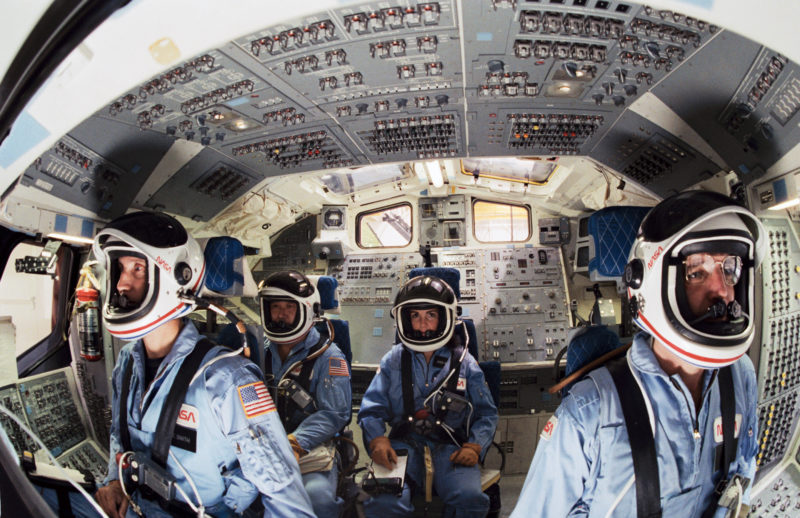
“That’s going to be a big improvement,” Mike Smith told an interviewer, “not only for the shuttle, but also for the space station when it gets up later on.” Until the early 1980s, missions had relied on a network of ground stations to relay communications between orbiting crews and Houston-based controllers. The TDRS network of at least two large satellites, positioned in geostationary orbits, 22,000 miles (35,000 km) high, would bring this era to a close.
Onizuka was simply thrilled at having the chance to help deploy “one of the largest communications satellites ever!” A Boeing-built Inertial Upper Stage (IUS), with two solid-fueled sections, would have delivered the satellite, over a period of about seven hours, into its operational location. Deployment of the combo would have consumed most of Challenger’s first day in space, with Onizuka and McNair assuming leading roles.
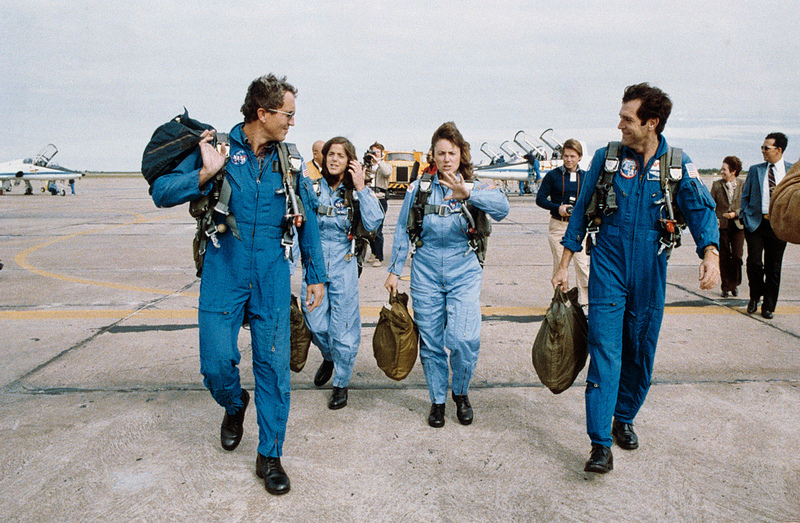
Shortly after reaching space, they would have rotated the TDRS-B/IUS “stack” to a pre-deployment angle of 29 degrees using the payload’s “tilt table.” As Scobee and Smith maneuvered Challenger into the correct attitude, Onizuka and McNair would have switched TDRS-B over from the shuttle’s electricity supply to the IUS’s internal batteries. Next, they would have commanded the tilt table to increase the angle to 59 degrees and, precisely 10 hours after leaving Earth, spring-ejected it, such that it swept smoothly over Challenger’s cabin roof.
Nineteen minutes later, Scobee would have fired the Orbital Maneuvering System (OMS) engines to create a safe separation distance in anticipation of the IUS’s first stage ignition. After computing the stack’s correct attitude by taking star sightings, the IUS would have fired its engine an hour after deployment and run for 2.5 minutes. An additional burn by the second stage, lasting just under two minutes, would then have achieved near-geostationary orbit.
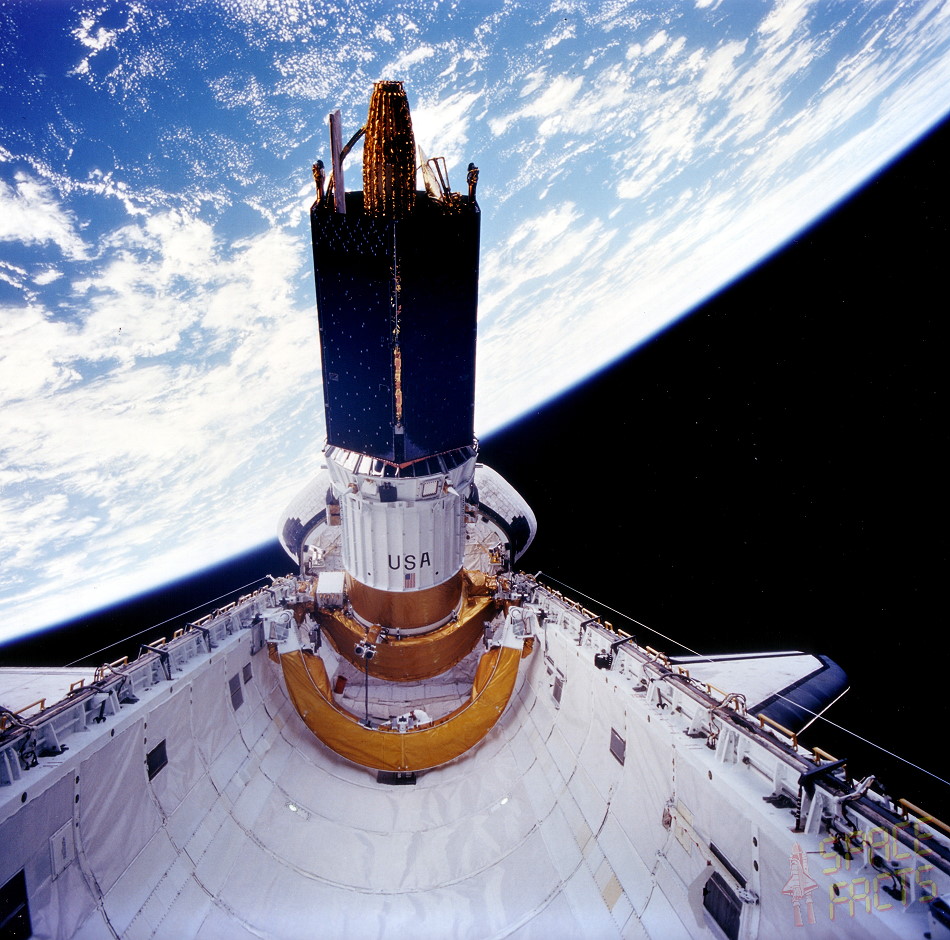
However, following his STS-51C mission in January 1985, which featured the successful deployment of a classified Department of Defense satellite affixed to an IUS, Onizuka expressed confidence in the weeks leading up to STS-51L in the training and procedures. “The basic training was the same,” he said of the similarities between his first and second flights. “Once we enter the area of payload and mission operations, there were some differences, [but] I’m very familiar with the IUS; very comfortable with it.”
A design flaw with a timing circuit aboard TDRS-1 had further delayed the launch of TDRS-B from March 1985 until early the following year. By September 1985, reported Flight International, TDRS-B had completed its repairs and was ready to go. Capable of handling up to 300 million bits of information per second, it would technically bring the TDRS system up to fully operational status, with satellites in the east and west.
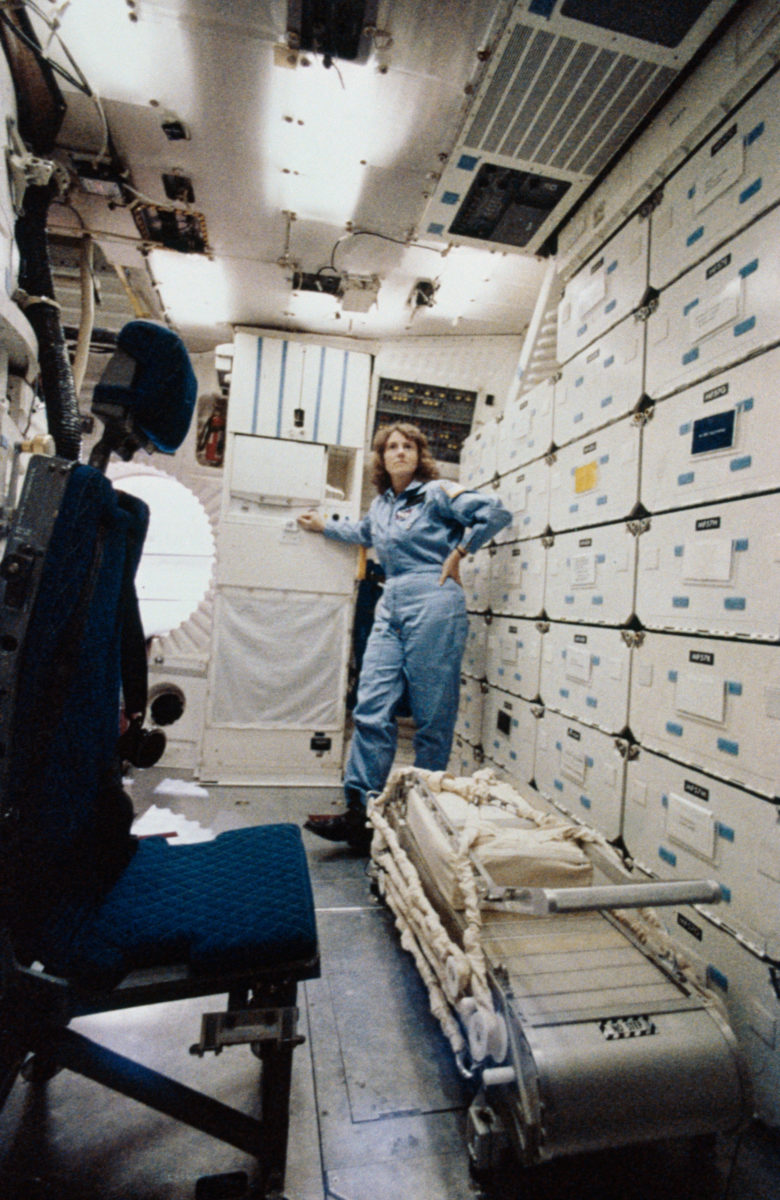
Nevertheless, a third satellite (TDRS-C) was scheduled to be ferried into orbit by Challenger’s STS-61M crew in July 1986 to replace the degraded TDRS-A. Until the arrival of this third member of the network, TDRS-B would operate from an initial “spare” orbital slot of 136 degrees West, providing much-needed backup services for its prematurely aging sibling. After the launch of the third satellite, however, TDRS-B was to be moved to its final at 171 degrees West.
Despite its important contributions to astronomy and communications, STS-51L naturally attracted media attention, as NASA had intended, thanks to the presence of teacher Christa McAuliffe. Explorers, journalists, and entertainers were considered in the early 1980s as the agency weighed up options for which profession would yield “the best” private citizen to send aloft on the pioneering mission. Ultimately, it was decided that a teacher would fly first. Dick Scobee agreed that it was the right decision.
“Teachers teach the lives of every kid in this country through the school system and if you can enthuse the teachers about doing this, then you enthuse the students and impress on them that’s something to expect in their lifetime,” he explained. “Man needs to explore and that’s part of the thing we have to do to ensure our future. So as far as I’m concerned, it’s a good insurance policy for the human race.”
McAuliffe’s tasks included two, 15-minute lessons: The first, entitled The Ultimate Field Trip, was a guided tour of the shuttle to familiarize students with on-board living and working conditions, while the second, called Where We’ve Been, Where We’re Going, focused on NASA’s plans for a permanent space station in the 1990s. Both were to have been aired by the Public Broadcasting System (PBS) on 2 February—24 hours before Challenger’s scheduled return to Earth—and McAuliffe would have explained the roles of her six crewmates, identified and summarized the experiments aboard Challenger, and enthused students with a vision of the future.
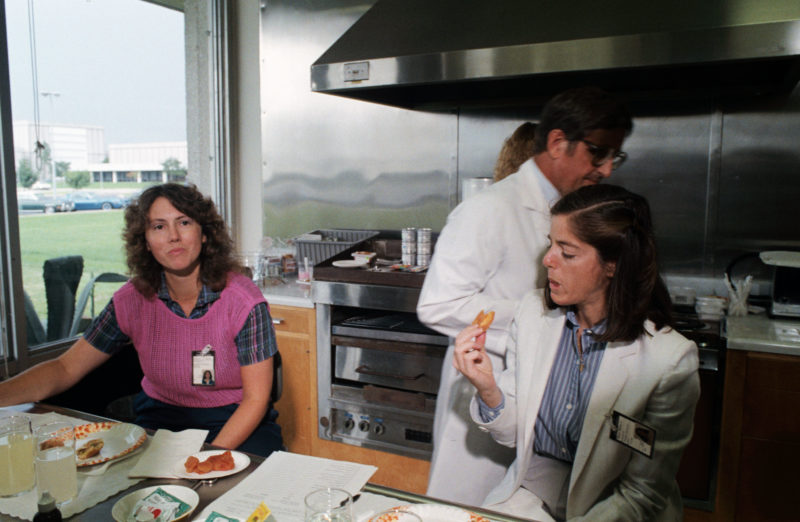
“I think it’s going to be very exciting for kids to be able to turn on the TV and see the teacher teaching from space,” she said. “I’m hoping that this is going to elevate the teaching profession in the eyes of the public and of those potential teachers out there. Hopefully, one of the secondary objectives of this is students are going to be looking at me and perhaps thinking of going into teaching as professions.”
McAuliffe and Greg Jarvis both joined STS-51L relatively late in the training flow. Yet both were quickly accepted and grew to become highly respected members of the team. “It’s refreshing to have somebody on board that’s really dedicated and enjoys doing what they’re doing,” Scobee remarked, “but also she goes into the training with a positive attitude and stays out of the way when she needs to stay out of the way, she gets involved when she needs to get involved and does basically all the right things, and so does Greg Jarvis. Both of them, from our standpoint, are good payload specialists. They came aboard with a good, open mind, they’re accommodating to our system, we try to be accommodating to theirs and it’s a nice trade-off.”
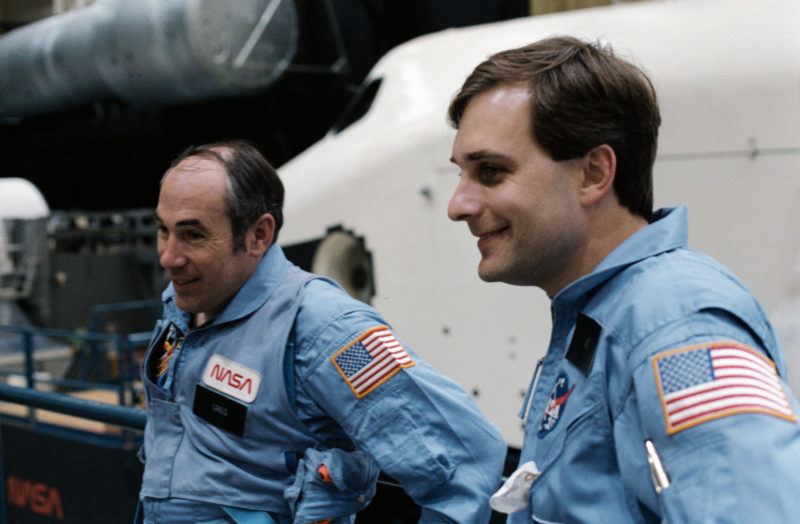
The level of respect was, of course, mutual, and Jarvis, a Hughes Aircraft engineer, recalled one particular session as an example of the ability of the astronauts to operate seamlessly together. “When you watch them work through the malfunctions they work through, you get very comfortable that they know what they’re doing,” he said.
“One time when we were in the Motion Base Simulator, the lights went out for the visual for the landing. The commander called down and said ‘Aren’t the lights out?’ And they [Mission Control] said, ‘I think so, we’ll get back to you on that’. The conversation went on for about two or three minutes and it turns out they had mistakenly turned the lights out on the visuals. The thing you didn’t realize was that he made a perfect landing without any lights!”
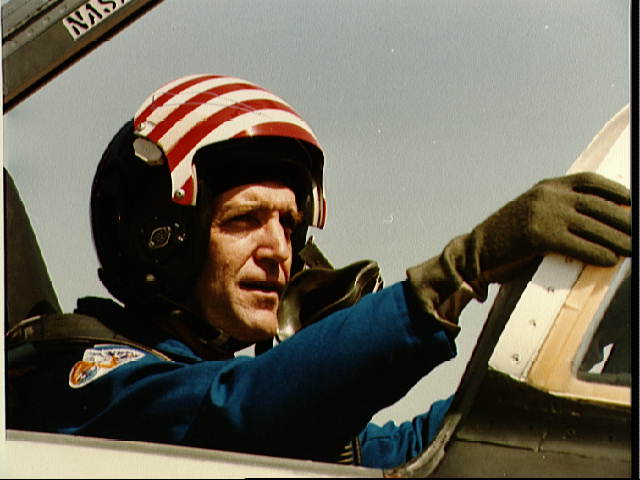
Despite a planned six days in space, all seven astronauts intended to spend some moments appreciating the uniqueness of where they were. “We have a fairly busy timeline and it’s nice to have time to go look out the windows,” Scobee said in one of his last interviews.
“I guess one of the things that pleasures me most is to have a quiet time where you can go look out the windows, turn out the lights and look at the stars and Earth and thunderstorms. Just the sheer joy of doing it is probably the most fun part because it’s hard to single out one thing, but even the hard work of it is generally fun. I enjoy the flying. I enjoy the excitement and thrill of the ascent, because it is really dramatic. Entry is fiery and the fires of hell are burning outside your window and you’re sitting there nice and comfortable watching all this go on and it’s just a neat feeling.”
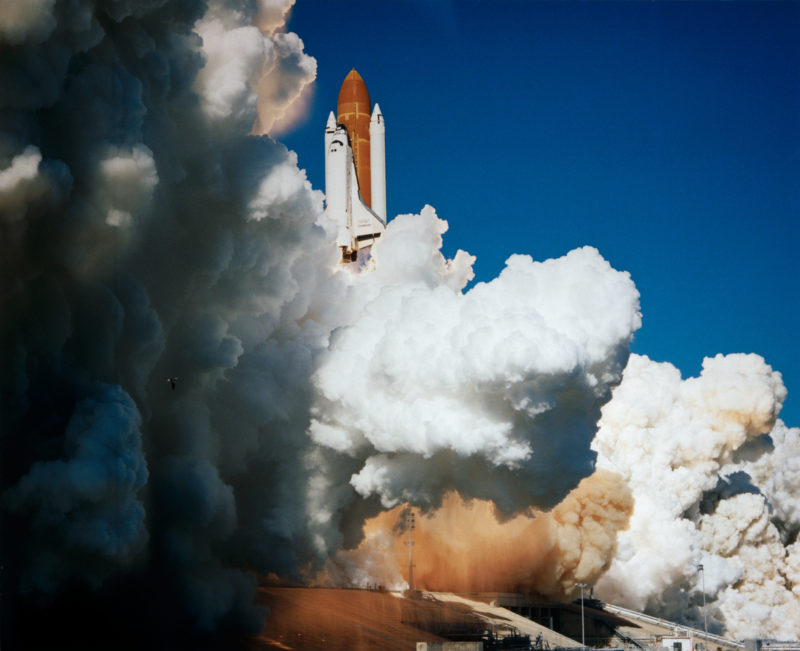
With a launch on 28 January, Mission 51L was scheduled to conclude with a landing on the Shuttle Landing Facility (SLF) at the Kennedy Space Center (KSC) on 3 February, completing a flight of six days and 34 minutes. It would have been the first shuttle landing back in Florida since April 1985.
Nonetheless, Scobee had already announced that STS-51L would be his last space mission. His last comments of encouragement to his crewmates over Challenger’s intercom in the final seconds of the countdown were words that conveyed enthusiasm, dedication, professionalism, child-like wonder—and an uncanny, though unknowing, preview of what would happen.
“Everybody strap in tight,” he told them cheerily. “We’re about to go for the ride of our lives.”
.
.
FOLLOW AmericaSpace on Facebook and Twitter!
.
.




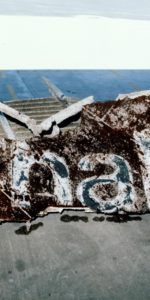
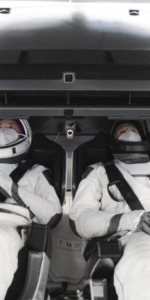
3 Comments
3 Pings & Trackbacks
Pingback:The Sun Kept Rising: Remembering Columbia’s Unflown Mission, 35 Years On « AmericaSpace
Pingback:Next Cygnus Cargo Ship Named for Challenger Hero Ellison Onizuka « AmericaSpace
Pingback:Next Cygnus Cargo Ship Named for Challenger Hero Ellison Onizuka